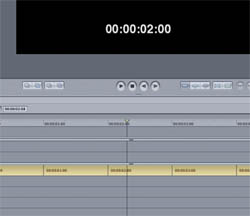
This time is recorded in real-time like any other audio source, with care taken to set the proper volume level and no EQ.
The frame rate for audio-only is generally 30 frames per second (fps), as this matches real-time exactly.
Many midi devices intended for audio-only use only read or write 30fps. (When wouldn’t you want to use 30fps? See the section below entitled “Sync-to-video”.) This type of SMPTE is called LTC (for Linear or Longitudinal Time Code).
It is linear in the same way that tape is linear – what this means is that, just like audio, if the tape is stopped there is no timecode being produced, just as there is no audio. The other type of SMPTE, VITC, is not used for audio, because it cannot be recorded on audio tracks.
Mix automation (or keyboard parts, etc.) can be recorded in a sequencer or in the mixing board itself (if it supports automation). Usually when this is done the timecode is translated into Midi-Timecode (MTC). (SMPTE can be converted to MTC through a variety of interfaces.)
The timecode allows the analog multitrack to be the Master. Oddly enough, the multitrack must be the Master because it is the most unreliable. It is a mechanical device and therefore susceptible to “wow-and-flutter” (meaning very small variations in speed).
These variations are generally not perceptible when listening to playback, but over time would cause the sequencer to drift out of sync.
For instance, the first time you play back your mix, the space between the kick drum and the cymbal crash is .98 seconds, and the next time it’s 1.01 seconds: in both instances, timecode only allows that the event happened at 0 minutes, 23 seconds and 22 frames. (Yes, we use frames even when not doing video.) Therefore your mute always comes off right before the cymbal crash.
Note that even though digital decks are not susceptible to drift, timecode is still used to synchronize them to other unlike devices. When syncing multiple identical devices such as ADAT’s or DA-88’s, you can often use a proprietary means of synchronizing that ‘s simpler to set up.
